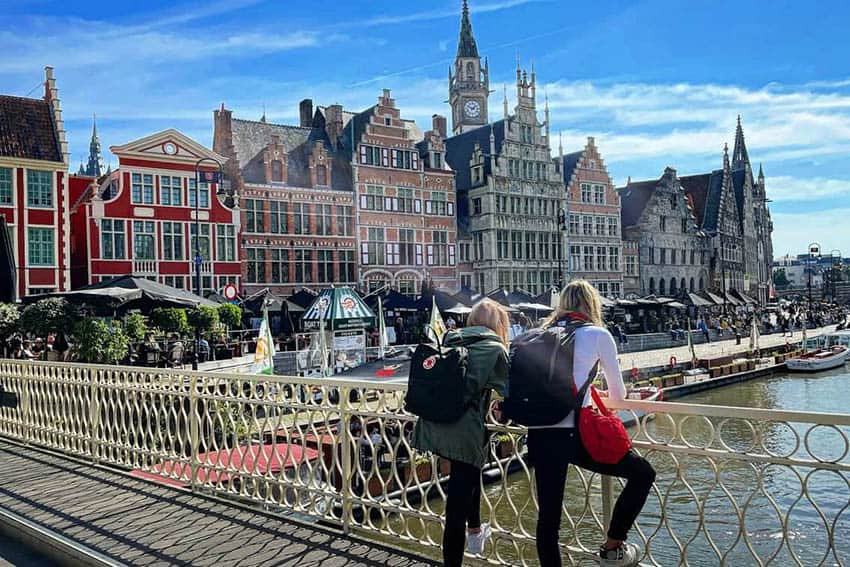
The Beautiful Backroads of Benelux
By Rich Grant
GoNOMAD Senior Travel Writer

Of course, the first question to ask: “What is “Benelux?”
Well, it can be a fairytale land of cheese and chocolate, mussels and frites, (fries) castles and cobblestone streets, canals and charming towns, flower baskets, windmills, market squares, and gabled rooftops. And beer.
It’s certainly the three flatland European countries of Belgium, Netherlands and Luxembourg. Unlike an abbreviation of words for convenience like New York’s “SoHo,” or Denver’s “LoDo,” Benelux is an actual political designation.
The three countries formed a Union in 1948 that became a model much later for the European Union.
Few Natural Barriers
Situated between France and Germany with few natural barriers and mostly open land, Benelux has always been at the crossroads of history.
It’s been invaded, fought over, conquered and liberated. Many of the largest European land battles – Waterloo, Flanders Field, and the Battle of the Bulge were fought here.
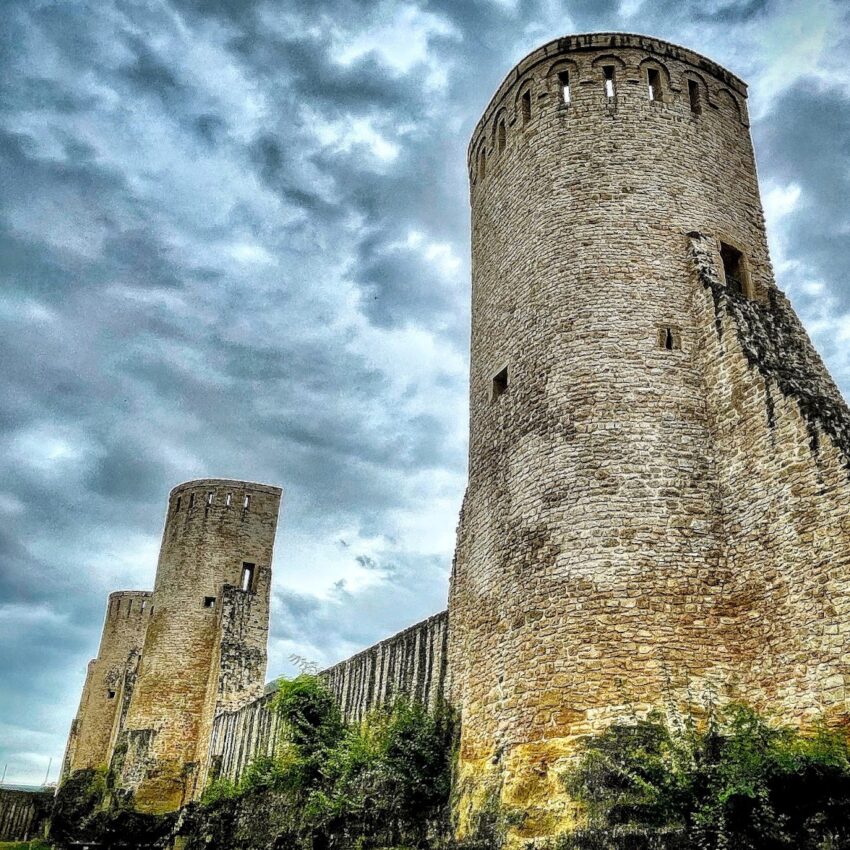
Today, the countries are so densely populated that their outline can be seen at night from space, with Brussels serving as the Washington D.C.-like capital of the European Union, and Amsterdam as the “Venice of the North.”
But beyond those two cities, most Americans don’t know much about Benelux. This is why my brother and I spent two weeks aimlessly wandering around, avoiding those two cities in favor of small villages, market towns, castles, and battlefields.
We’d find a good base, make day trips around the area, park the car in the evening and take advantage of European open container laws (which means it’s usually perfectly legal to enjoy a beer or a bottle of your own wine as you stroll along admiring castles, canals, and centuries-old architecture). Here’s some advice on what you can see.
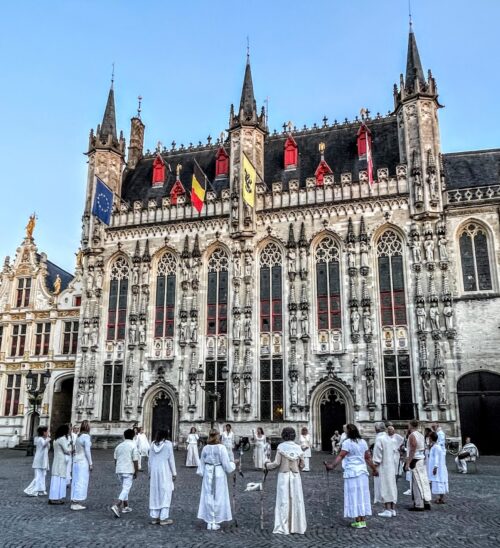
Luxembourg City, Dutchy, and Fortress
There’s no doubt that Luxembourg is a strange little place. Smaller than Rhode Island, it is one of the richest countries in the world and the only Grand Dutchy.
Both the city and country are named “Luxembourg.” Half of the 634,000 people living here are foreigners and there are three official languages, French, German, and the little spoken Luxembourgish, though everyone also speaks English.
I suspect many tourists visit just to say they have visited. We also heard tales of a drinking game, where with a little effort, it’s possible to have drinks in five countries in one day (Germany, France, Belgium and the Netherlands are all that close).
Gibraltar of the North
But for my brother and me, Luxembourg is amazing because it is one of the most fortified cities in Europe.
Once billed as the “Gibraltar of the North,” only about 10 percent of the fortifications remain, but they still constitute about 90 percent more bastions, forts, walls and casements than you’ll find anywhere else.
Even better, the town is built on a high rock cliff with panoramic views overlooking two rivers and even more distant forts.
You can walk, as we did, all day and evening along stone walls, through fortified gates and past high circular towers and not even see the half of it.
The nine centuries of fortifications are now a UNESCO World Heritage Site. There are winding trails and free elevators to take you from the Old Town on top of the cliffs down to the riverside Old Town (called Grund) beneath them.
Luxembourg was occupied and heavily damaged by the Germans in both world wars, so much of the main city is modern, but the upper and lower Old Towns are still romantic places of typical European winding stone streets and outdoor cafes.
One café we saw was amazing. Called the Chalon de Thé, it is filled with cats. 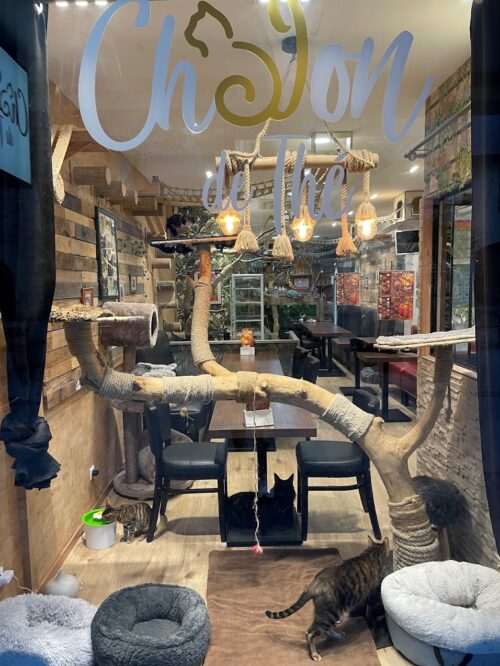
The felines have the run of the place and will jump on your table, or just sit and purr beside you.
The fire hydrants in town are dressed up to look like horrifying clowns, and there’s quite a bit of modern art in murals and statues everywhere that is, well, just strange.
But bottom line, you won’t regret being able to say you visited Luxembourg.
The Most Castles in the World
Because Belgium was so vulnerable to attack, it is known for its 3,000 castles, more castles per square meter than anywhere else in the world.
About 400 are open to the public in one way or another, many of them modernized and more like palaces. Our interest was fortresses, and there’s no shortage of those. Four outstanding stops:
Bouillon: Close to the French border, this 1,000-year-old fortress would be a perfect location for a Game of Thrones sequel.
It’s a magnificent stone castle in the center of a horseshoe bend of the Le Semois River that uses rock cliffs as part of its defenses.
There’s a Birds of Prey show, a night lighting spectacle, fortified drawbridges and great walks along the ramparts.
Even better, the old stone town below the castle is every bit as wonderful with hanging baskets of flowers and quiet outdoor riverside cafes.
It’s the type of romantic town that is hard to believe actually exists outside of a film.
Namur: When we met our home rental host here to get the key, he was flabbergasted to learn I was from Colorado. He’d been to the Rocky Mountains and said, “You live in Colorado, and you holiday in Namur?!” Well, when you put it that way, Namur does have some rough industrial edges.
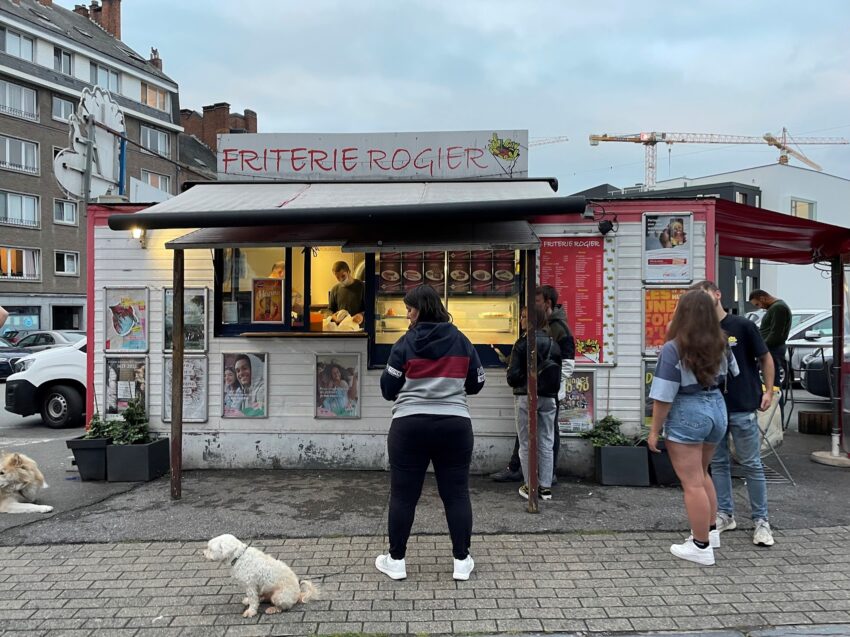
But hovering over the town is one of the great citadels of Europe and one of the best interpreted with a museum that brings alive 2,000 years of European military history.
The area around Namur is known for strawberries with stands selling fresh strawberries lining the roads.

Dinant Near to Namur (and perhaps a better place to stay), the Citadel Dinant is located on such a high rocky point that it can only be entered by cable car or climbing 408 steps (take the car up and walk down).
The citadel dates to 1040, though what you actually see is from 1819. 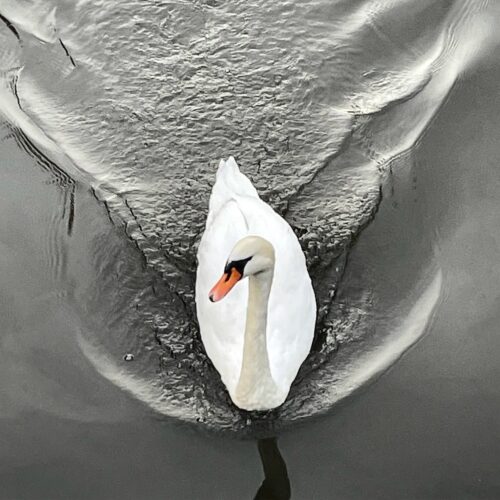

The town sits along a narrow land shelf on the River Meuse and with the fortress as a backdrop, it has one of the most dramatic settings in Belgium.
And one of the saddest histories. Occupied by the Germans in August 1914, some Belgians in town fired at the enemy troops from houses.
In retaliation, a total of 674 civilians including women and children were herded to a town square and other locations and executed.
The spot is now a somber memorial to the atrocity.
Vianden Castle This one is just over the border in Luxembourg. Constructed between the 11th to 14th centuries, it fell into ruin and was a pile of rubble until 1977 when the owner, the Grand Duke of Luxembourg, transferred it to the state.
It has since been completely restored to its former glory and is one of the largest feudal residences of this type in Europe. Even so, we were the only ones there when we visited.
Chocolate, Frites, and Beer – the Belgian Way
My Paris-based brother tells me the French love to make fun of the Belgians. Especially their cuisine. But the Belgians are the undisputed world masters of three things food: chocolate, frites and beer.
The chocolate fascination dates to the 1840s when there was a surplus of cocoa beans in the Belgian Congo and some Belgian chocolatiers invented the first pressed chocolate, and later created a way to put soft ingredients inside the chocolate.
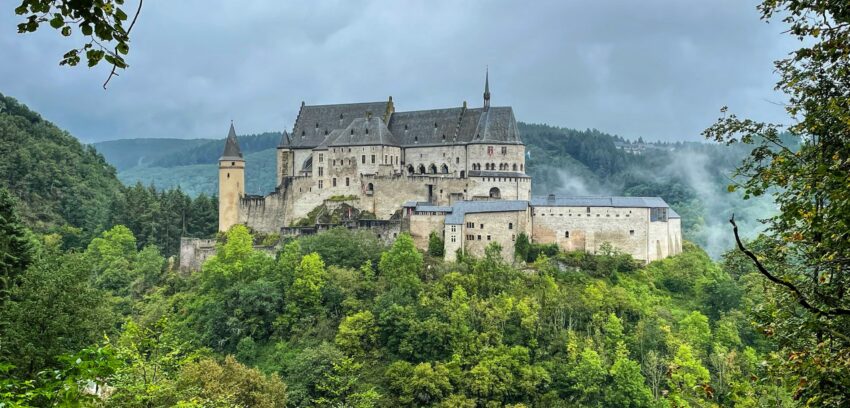
Today, Belgium produces 725 tons of chocolate a year. Any chocolate claiming to be Belgian must be made in Belgium and be a minimum of 35 percent cocoa bean.
There are more than 320 chocolate shops in the country. Of course, I picked the one where the clerk, although she was very cute, did not speak English, making it a challenge to guess the fillings. But, as I tried to explain to her, “it’s all good.”

With frites, they’ve stopped executing tourists in Belgium who call them “French Fries,” so today you get off with evil looks and a possible beating.
Of course, it was the Belgians who invented fried potatoes in the 1600s and today it’s a national obsession with 5,000 “fritkots” in the country.
These fritkots are usually shacks, roadside trailers or dumpy buildings that sell pretty much nothing but fries. They are everywhere, about as prevalent as all fast food in America combined.
We visited many and everyone was great. The secret is they fry the potato twice.
Once in low-temperature oil, then they take the fry out and cool them on a tray. When you place an order, they fry them a second time in very hot oil and serve them in a paper cone.
The hot fries are crispy on the outside, fluffy inside.
The Belgians are infamous for eating their fries with mayonnaise, but every stand also has “American Ketchup” as an option for a half Euro.

Belgium also combines their Frites with plumb mussels from the Scheldt River in west Belgium (said to be the best mussels in the world) creating their national dish: Moules-frites. I had it every other night for two weeks and each one was better than the last.
Beer in Belgium is a whole another book. Almost every convenience store has 50 different types of Belgian beer, and specialty shops have 500 beers. Even more remarkable, every beer brand has its own glass, and often its own shape.

The most famous Belgian beers divide into two classes: Trappist beers where the brewery must be a monastery and monks must play a role in its production (there are six of these including Chimy and Orval) and Abbey Beers, which look and taste like Trappist beers but can be made commercially without any association with monks, like Leffe.
Of course, there are popular pils beers like Stella Artois, blond ales like Duvel, and lambic, tripel, saison, dubbez and brown ales, just to name a few.
True Belgian beers are an acquired taste. I acquired it after about 20 beers. Especially helpful was a free class on how to pour Duvel (the finished product must be half foam).
Antwerp Netherlands
With our luck, we stumbled into Antwerp during its annual beer festival, a city-wide celebration with food and beer booths and big stage entertainment, where we had not only the opportunity (but we were actually encouraged!) to walk around the city constantly drinking a beer.
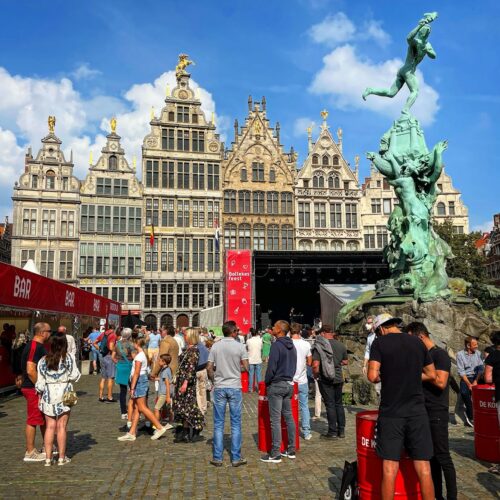
Some of which were free. Ah, it was grand. And what a city to walk around.
There’s a castle and the entire center looks like it was made out of Legos – block after block of gabled historic buildings, pedestrian streets, attractive looking people, beautiful shops, department stores, bikes, restaurants, cafes and a knockout of a grand railroad station.
It’s like some Disney version of a generic European city that is fun, foreign-looking, elegant, and completely American tourist-free.
And then there’s the red-light district. Antwerp is a port town and the red-light district used to be in a dangerous area, but the surrounding streets have now been gentrified with cafes and bars.
The district itself is several blocks of modern buildings constructed specifically for the purpose of legal prostitution and features several dozen little cubicles, each with a large picture window and a door.
This is not the picturesque, tourist red-light district of Amsterdam. It’s a business only, no tourists, no women, “no photos please,” trip into the “Twilight Zone.”
Very attractive women sit in the windows in lingerie with bored or vacant expressions and an endless stream of men walk by, some occasionally stopping at the doors to begin a transaction.
About a quarter of the windows have curtains drawn, but lights behind them. It was dismal, official, organized, spotlessly clean, safe and depressing. But at the same time fascinating in its drab, completely unsexy, un-American approach. There wasn’t a single neon light.
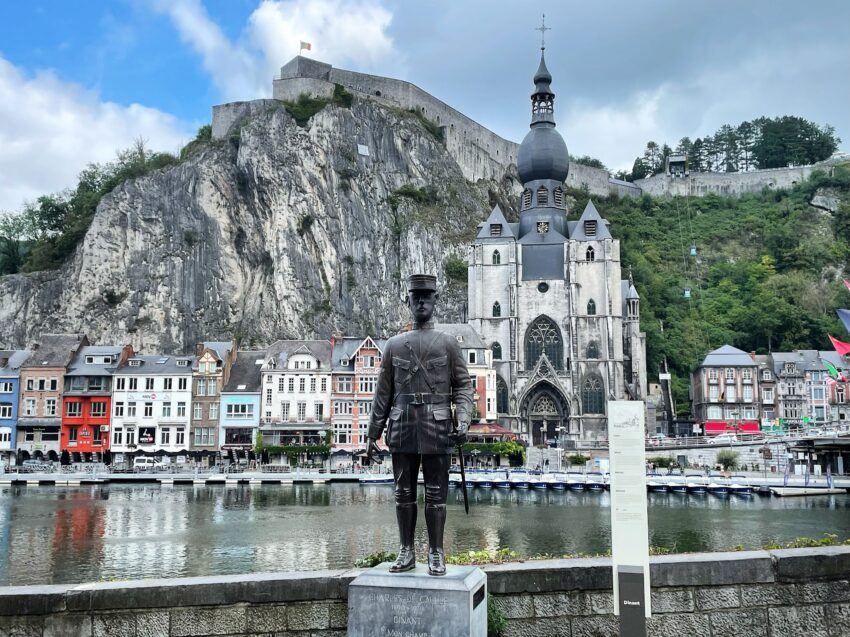
Villages of the Netherlands
The Netherlands, the country formerly known as Holland, but please don’t call it that anymore (only two of the 12 provinces in the Netherlands are Holland) was a few kilometers away from our trip in Belgium.
So we Googled “prettiest villages of the Netherlands,” circled those nearby on a map and spent three days surrounded by flowers, canals, cheese, fresh bakeries, windmills and bicycles.
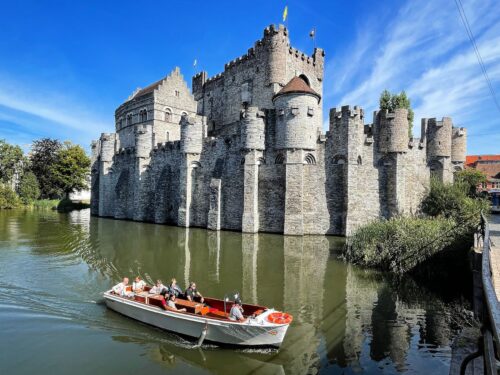
If you have no real agenda other than to be in a pretty place, it’s easy to do that in the Netherlands.
Of course, the countryside can be flat and monotonous, but hit one of their star attraction towns, park near a canal, and set out walking to get hopelessly lost on bridges and backstreets.
Here are two gems worth making a detour to visit, although all the Dutch towns we saw were delightful.
Leiden: This knockout of a town is where Rembrandt was born, Einstein was a professor and the Pilgrims lived before sailing to America in 1620.
It’s a maze of canals and bridges lined with 17th-century buildings, flower baskets, and restaurants, some built on old canal barges.
There’s a university with 27,000 students, so it’s a young town of attractive people.
And they are tall! It’s a well-known fact that the Dutch are the tallest people in the world, and they seem especially tall in Leiden. Almost comically.
Once you know the Dutch are the tallest people, you can’t help but notice that it sometimes seems you’ve stumbled into a science fiction movie of another planet where everyone is tall.

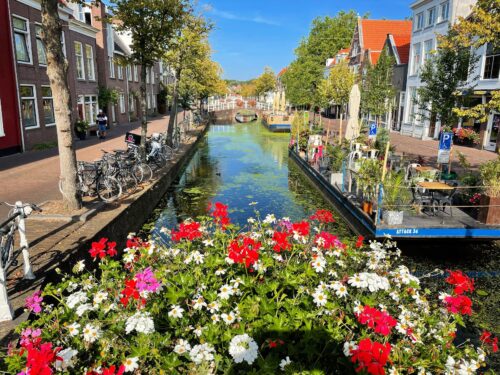
Delft: Famous for their Pottery
Delft: You’ve seen Delftware, the 17th-century blue and white pottery that looks like Chinese porcelain.
You can buy a sample in shops here in every conceivable shape and form (animals, vases, kitchen magnets … if you can think of an object, they have it here made in Delftware).
We were almost convinced to visit the factory where Delftware is made.
Fortunately, wiser heads prevailed, so instead, we had smoked salmon sandwiches on dark bread with pickles, cheese and great Dutch beer sitting on a bridge over a canal with a steady stream of boats passing below.
But, blue pottery aside, the rest of the town center of Delft is like walking in a Dutch postcard, with windmills thrown in as a bonus. We paid $100 euros a night for a three-floor, three-bedroom flat overlooking a canal.
Of course, this being the Netherlands, the flat was only 15 feet wide and had a circular stairway connecting the floors. It was what they would call, “Deep Dutch.”
So is bicycling. Everyone bikes and there are bikes with coffee shops on the back, garbage collection bikes, and in the morning, an armada of bikes with kids in school uniforms. I
t can be scary to walk because there is usually a 20-foot drop from the sidewalk to the canal with no fence, and bikes will pass you on the left and right and come right at you, swerving at the last second.
They know what they are doing. Don’t change direction suddenly while walking and don’t stop short was the best advice we learned.
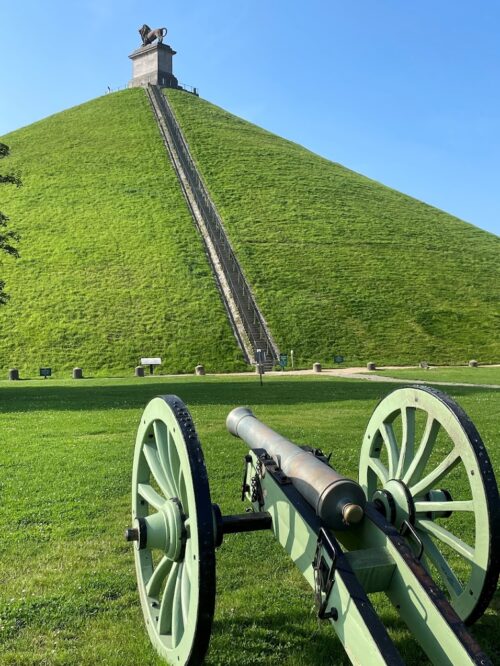
Battlefields of Belgium
Even if battlefields are not your thing, Waterloo is worth a visit. The battle, the largest in French history, resulted in 48,000 dead, wounded and captured and altered history for 100 years. In 2015 for the 200th anniversary, a new museum with a 4-d film and high-tech exhibits was added.
During the film, you’ll feel puffs of air as cannonballs come your way and experience the horror and noise of a 19th-century battle.
The British commander, the Duke of Wellington, was to say of Waterloo, “Nothing except a battle lost can be half so melancholy as a battle won.”
As you walk the trails, it’s hard to relate the pretty countryside of today with the battlefield where the dead and wounded lay for days. Don’t miss the nearby Waterloo Brewery, one of the best we discovered.
Battle of the Bulge
In World War II, by Dec. 16, 1944, the Allies had landed at Normandy and fought their way across France. Everyone expected the war to be over by Christmas. Except for Hitler.
He devised a surprise attack that would hurl 200,000 Germans and 1,000 tanks through the Ardennes Forest of Belgium against a thin part of the American line.
Launched during a snowstorm, it was a complete surprise and pushed the Americans back 35 miles, creating the famous “bulge.” In the end, it would become the largest battle ever fought by the U.S. Army with 100,000 men killed and injured and more than 600,000 American troops engaged.

The center of the battle was the town of Bastogne, where 20,000 men of the American 101st Airborne held out for a week, surrounded and bombarded constantly by 50,000 Germans.
Today, the town is home to the Bastogne War Museum, a multi-sensory experience with films, three-dimensional stage settings, and the gigantic Mardasson Memorial that pays tribute to the men who fought and died here.
The region is filled with other war museums and military equipment, but while we went to several, this is the one to visit.
The Incomparable Beauty of Ghent and Bruges
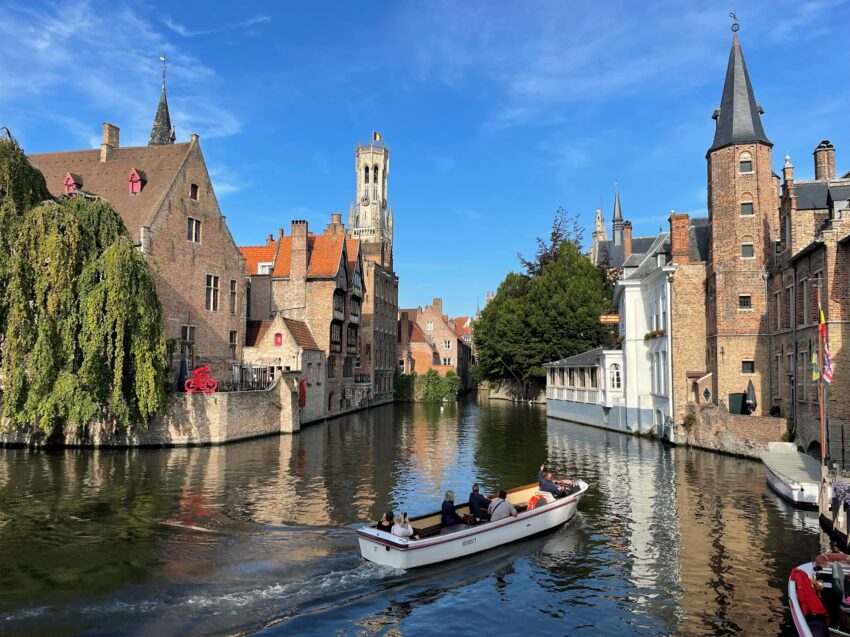
Bruges is hardly undiscovered and tour groups have been coming here for decades, especially following the success of the movie, “In Bruges.” Despite that, we hardly heard nor saw an American in Sept. 2021.

Part of the challenge of understanding the appeal of Bruges is that it is difficult to photograph. Of course, it is picturesque, and that’s the problem.
Everywhere you look, there is a photo. But none of them is definitive. What makes Bruges Bruges, is that everything is gorgeous – every street, café, open market, tower, windmill, canal, bridge and building is drop-dead beautiful.
There are more than 50 chocolate shops. And then there are the swans and flower baskets, the medieval cobblestones and the Druids (yes, Druids) dancing in the market square that make the place almost surreal.
The Torture Museum of Bruges

Naturally, there are cathedrals, towers, and museums, but after two weeks in Europe, we were done with all that and settled for just walking around aimlessly.
Well, we did visit the Torture Museum, which, if you have any interest in Medieval torture, is outstanding. But Bruges is a place to just relax, walk, marvel, and experience.
In pre-pandemic times, I’ve heard Bruges could be overwhelmed by busloads of group tours, but that type of over-tourism was certainly not evident in 2021.
If over-tourism comes back, there’s an easy solution. Just go to nearby Ghent instead. Ghent (besides being the hardest to pronounce city in Belgium) is also spectacular with a story-book castle, beguiling back streets, towers, riverboat tours, and everything that Bruges has, but on a bigger more city-like scale.
- Oklahoma City and the Protest Movement - February 15, 2024
- California, We Still Love You - August 31, 2023
- Western Gunfighting Towns You Gotta See - March 25, 2023


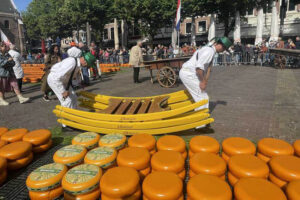
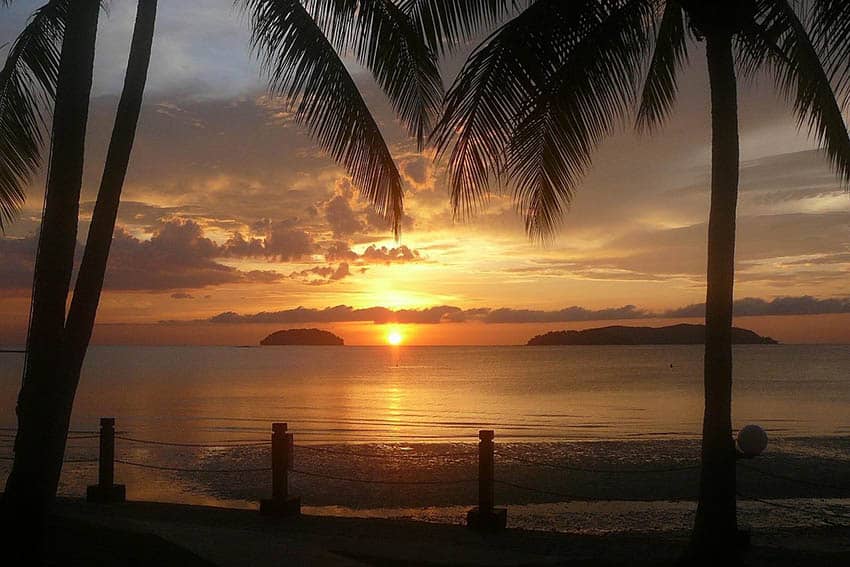
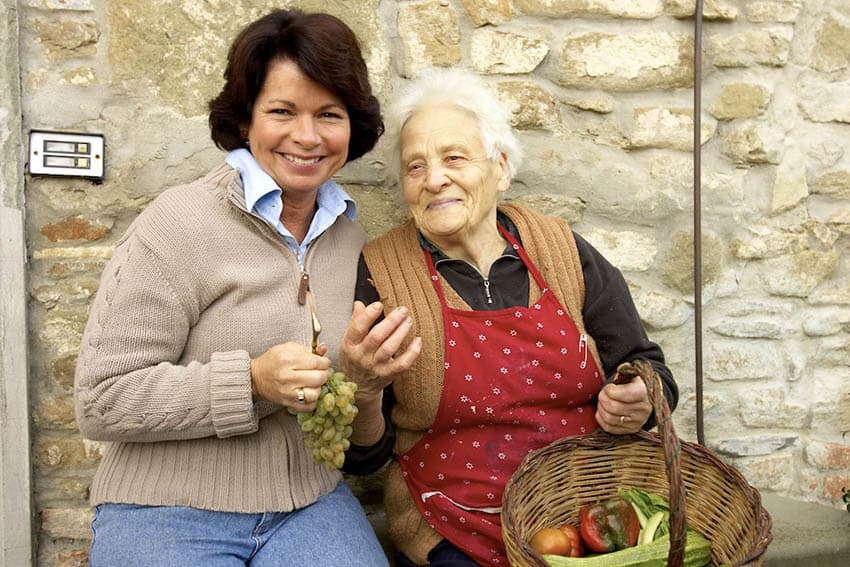
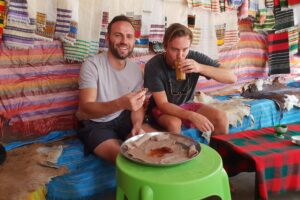
A wonderful story of a beautiful tiny country…beer and frites too!!!
Great article. I miss Europe!
My aunt loved Luxembourg so much that she walked into a sign post while just looking around. She was fine but we all enjoyed Luxembourg, and the story of our aunt.